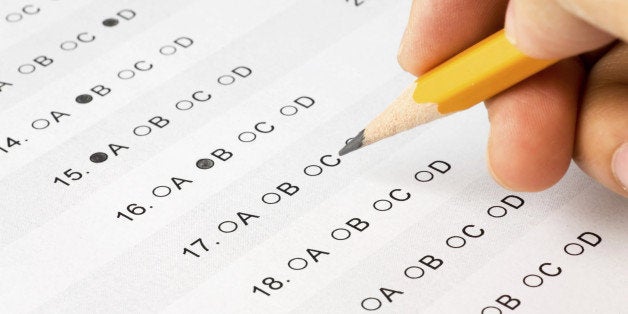
There is no denying that the SAT test has become a misunderstood educational instrument through the years. The original purpose of the SAT was to help evaluate the ability of an individual student on how best he or she can perform in college. But somewhere along the line, the SAT became a mark of prestige for institutions of higher learning -- a way to for recruiters to draw a roundabout (and grossly inaccurate) conclusion that a college must be good if average SAT scores were high.
This way of thinking, overlooks factors such as the ability and dedication of instructors on what students actually learn at that college. Moreover, equating the SAT as a mark of quality perpetuates class privilege -- a real sticking point among those of us who educate inner-city students.
In high schools across America, juniors and seniors will gather to take the SATs this spring (next up, March 8) and roughly one-third of those test-takers are likely to be Hispanic or African American, based on 2013 statistics. Still, having a generous number of minorities who are taking the SAT does not necessarily translate to them doing well on the test. The challenge is that the SAT has become predictive of very little when it comes to urban, minority students.
A good deal of research suggests that the SAT has only limited use as a predicator of academic success. It is a class-biased instrument and unreliable for students from low-income backgrounds and from inner city high schools. For instance, students from middle and upper class backgrounds can afford expensive SAT prep-courses and even private SAT tutoring to raise their scores substantially. Low-income students cannot.
My message to college admissions offers that grades -- not SAT scores -- should be what matters the most for all students -- and especially urban minorities.
A student with a high school Grade Point Average of 4.0 will understand how to do well in college -- and in their professional lives after college -- no matter what his or her SAT score turned out to be.
How do I know? Because I see it each year.
At the urban charter I founded in Camden, New Jersey -- LEAP Academy -- 98 percent of our students took the SAT during the 2013 school year.
How many do you think reached the 1,550 point benchmark for college readiness?
Thirteen scored above 1,550 and the rest were close to 1,550. Yet, at the LEAP Academy, all 60 of the students graduated and went to college. Some have attended Ivy League schools, which require the SATs to be above 1,550.
Should more of our minority students score higher? Yes, of course. However, more work needs to be done in improving urban education and providing equal access to quality schooling, teachers, neighborhoods and creating new conditions and environments for poor families and kids to learn and prosper in society.
At LEAP Academy, all 60 graduating seniors were placed in college -- and we have achieved 100 percent college placement each and every year since 2005. Many LEAP graduates earn admission to highly competitive universities and earn scholarship money based on merit and good grades regardless of SAT scores.
Furthermore, most LEAP graduates are thriving now as college students and many are attending graduate school. Many of the first waves of LEAP graduates are now out of college and serving key roles in helping enrich the lives of the people in Camden -- including some who have returned to LEAP to become excellent faculty members.
The LEAP teachers and administrators prepare students for college by teaching the necessary college readiness skills to each individual student. We also expose students to early college courses while still in high school. This experience is more valuable to college admission officers because it speaks to the student's ability to do great academic work.
Teachers, principals and administrators stay late and help tutor LEAP students. Parents at home are also tutored so that they can help their sons and daughters with their homework.
It takes a village to teach an urban student -- and progress simply can't be measured by a single SAT test.
The low SAT scores that LEAP is experiencing is pretty much the case at other urban schools where minorities are enrolled; however, in colleges, thousands of minority kids are making the grade, graduating with honors and going into mainstream professions. So, when are we going to make these tests optional rather than mandatory for admitting kids to college?
Consider this: Blacks and Hispanics are well behind the 43 percent of students overall who met the 1,550-point college-readiness barometer last year -- a percentage has remained virtually unchanged for five years, according to the College Board, which administers the SAT. The SAT or ACT is increasingly proving to be out of touch anachronistic test that does not provide a full picture of a minority student's potential.
I am not suggesting we do away with the SAT altogether -- only that we consider it as part of a much broader picture and avoid falling into the trap of believing that the SAT is the top predictor of college success.
Urban educators get it. It is time that college admission officers understand the urban bias, as well.
